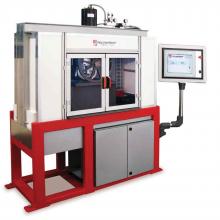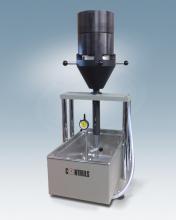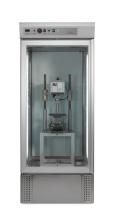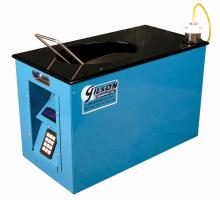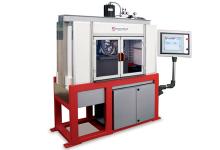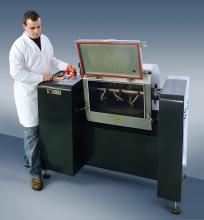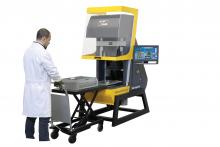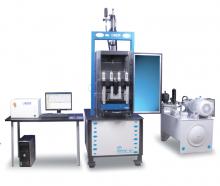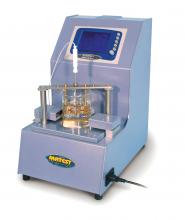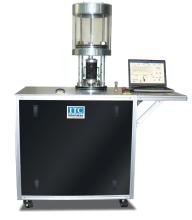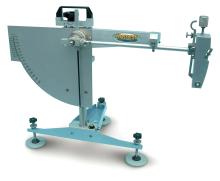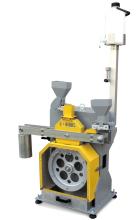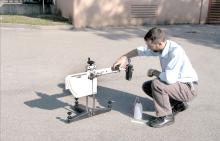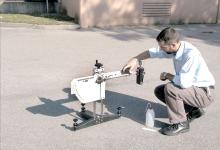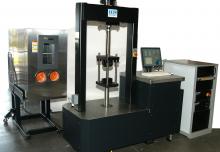Today’s highways require high performance materials, and this means rigorous testing as Patrick Smith reports Highways are under greater pressure than ever today and asphalts have to grant high performances in order to withstand traffic and meet the standards. Studying the plastic permanent deformations in hot mix asphalt (HMA) is very important to obtain useful information for mix designers as an appropriate mix design will reduce the formation of unevenness on road surface. To investigate the effect of mi
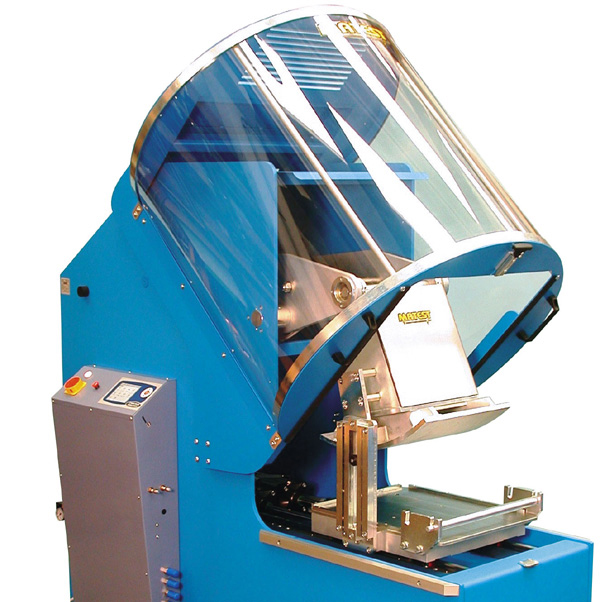
The BO39 Matest pneumatic Roller Compactor
Today’s highways require high performance materials, and this means rigorous testing as Patrick Smith reports Highways are under greater pressure than ever today and asphalts have to grant high performances in order to withstand traffic and meet the standards.
Studying the plastic permanent deformations in hot mix asphalt (HMA) is very important to obtain useful information for mix designers as an appropriate mix design will reduce the formation of unevenness on road surface.To investigate the effect of mixture variables it is necessary to have laboratory equipment that can simulate, as closely as possible, on-site compaction and trafficking, says
The company is among a number of specialist manufacturers that are constantly updating equipment portfolios for a wide variety of tests carried out on materials such as asphalt and concrete before, during and after application.
Matest recently introduced the Wheel Tracking apparatus B038, the first product of a new line of ‘Matest-made’ equipment dedicated to advanced tests on hot mix asphalt.
The company says the machine assesses the resistance to rutting of asphaltic materials under conditions which simulate vehicle loads and traffic situations, and is a high-technology product that fully satisfies EN 12697-22 (procedure A and B) and BS 598:110 specifications.
“Its excellent affordability confirms the company policy of offering advanced solutions for testing construction materials at competitive prices.” A rubber wheel is loaded with 520N or 700N and rolled over a sample held on a moving table under constant and controlled temperature (adjustable from 30-65°C). The load is applied on the sample through a lever and the wheel penetration is measured in real-time by a linear transducer.
“The apparatus has a data acquisition/processing system for automatic test control. A multi-function keyboard allows an easy set up of all parameters while number of cycles, rut depth and temperatures are visualised in real-time on a large graphic display. Test results can be automatically downloaded to allow the operator to analyse them and to issue the test certificate,” says Matest.
To compact specimens for use in the wheel-tracking test, Matest, which exhibited at the recent
The compaction is performed through a segmented roller with alternated pneumatically-operated rotation that simulates the on-site action of a street roller. Slabs are compacted up to the selected density to obtain specimens compatible for wheel-tracking tests with Matest B038 apparatus or other tests (bending fatigue, indirect tensile stiffness modulus, static/dynamic creep and four-point tests).
The Matest Roller Compactor consists of a touch-screen control unit based on the Windows operating system for the management of data, test results, and graphs.
“A friendly and easy-to-use interface allows a fully automatic test execution to minimise variability due to possible human error.
“The compaction cycle can be programmed to a certain load or deformation value. When deformation is programmed, the system automatically calculates the suitable loads to obtain the final selected thickness.” A direct connection to Internet or LAN networks allows the operator to receive an immediate technical support by Matest staff as well as software updates. The software flexibility grants the production of samples with uniform density and dimensions, in accordance with standards specifications.
Controls’ new GYROCOMP
According to “Controls’ gyratory compactors, used for over 15 years worldwide, offer user-friendliness combined with reliability and ergonomics, and they have been produced in hundreds of units both in the first generation dedicated to research and in the second generation dedicated to road construction,” says the company.
“Controls expanded the know-how in the gyratory compaction method with the exclusive ILS, the internal angle calibration device working with a procedure already standardised both in Europe, with EN 12697-31 Annex C, and the United States, with AASHTO TP71 and ASTM D7115.” Thanks to this experience, Controls introduced the third generation of gyratory compactors at Asphaltica, with the new GYROCOMP Model 76-B2522.
“The new compactor includes and increases the advantages of the previous Controls models: the new touch-screen control panel makes the interface easy and user-friendly and allows, when needed, the connection and a remote control by PC. In this way the compactor can be easily used both on-site and in the laboratory,” says Controls.
In the case of PC use, dedicated, advanced software is provided, allowing the machine control, the management of the test certificates, the database of the performed tests and the elaboration of the mix design procedures.
The control panel is available in a wide range of languages and the software language is can be fully customised, making the interface adaptable for any user need.
During the test, all test parameters are shown live in the integrated control panel, allowing the operator to check their conformity with the selected conditions. The machine incorporates a new worktop with integrated motorised extruder, and this allows a reduction in working time between two tests, thanks to the fast mould extraction.
The new gyratory compactor GYROCOMP Model 76-B2522 allows the vertical pressure on the sample, the mould rotation speed and the mould inclination angle to be adjusted, granting a perfect calibration of all the parameters and the test performance conforming both to AASHTO T312/Superpave procedure and EN 12697-31.
It is provided complete with traceable calibration certificate of vertical load and internal angle, performed with the exclusive ILS device conforming to EN 12697-31 Annex C procedure.
Two machines in one
Two in one: that is what is on offer with the latest product developed by “The Roller Compaction and Wheel Tracking Apparatus offers two solutions in one machine, enabling slabs of bituminous mixture to be produced at controlled density which are subsequently subjected to the wheel tracking test,” says the company, which held a seminar at Asphaltica called Roller Compaction and Wheel Tracking Apparatus: When a New Solution is Worth Double its Value, where “the revolutionary design” of its new machine, which was exhibited, was explained. The Polytechnical University of Milan contributed by describing its practical experience using the machine.
According to Tecnotest, integrating the wheel compactor and wheel tracking functions required a long period of study before the machine’s special architecture, which has been patented, could become operative.
“As far as the compacting function is concerned, the so-called kneading method has been improved. This consists of interposing between the bituminous mixture and the roller a series of metal plates, which are each allowed to slide freely in turn in the vertical direction, guided by the inner surfaces of the mould.
“This technique, besides being contemplated by the EN 12697-33 Standard, has the advantage of reducing by itself the resulting anisotropy around the edges that is produced when following the method prescribed in the standard using a “smooth steel roller,” and of completely confining the bituminous mixture between the pre-heated metal elements having enough thermal inertia to maintain the temperature of the binder more or less constant during the compacting phase,” says Tecnotest.
The novelty involves the form of the plates, which are equipped with appendices at each side constituting the rolling tracks for two discs located just clear of the outer lateral edges of the mould.
In this way it is possible to position the central wheel over the bituminous mix so that it is ready to perform the wheel tracking process (‘small size’ configuration, EN 12697-22), once the plates have been removed.
The hardware comprises three sensors: an encoder to define the position of the horizontal axis, powered by a brushless motor; a magnetostrictive transducer and a load cell for the vertical axis. The horizontal actuator is of the ball screw kind with recirculating ball bearings and the vertical actuator is a pneumatic double-acting cylinder with rolling membrane combined with a particularly high-performing servo-valve.
Continuous load or deformation feedback control determines an excellent homogeneity of the slab produced as well as a procedure free from the effects of inertia during the wheel tracking mode.
Programming is made via a PC with touch-screen monitor. The user interface is organised so it simplifies start-up and generates diagrams of sensor responses in real-time: test data are automatically saved in files.
The test chamber is housed within a climatic chamber, capable of maintaining a programmed temperature to within 1°C precision in a range from ambient temperature to 60°C.
The special trolley supplied as part of the standard equipment allows movement and handling of the mould and also allows it to be pre-heated.
“The new Tecnotest product is both novel and functional with its range of operation also covering tests for advanced research purposes as well as routine laboratory tests but involving the costs of the latter thanks to the dual purpose of the moving components and control devices.”

